On November 19, the University of Pennsylvania (UPenn) announced the launch of the Quaker Commitment starting in the 2025-26 academic year, raising the income threshold for full tuition support to better assist middle-income families.
Shortly after, on November 20, the Massachusetts Institute of Technology (MIT) announced that starting in fall 2025, it will offer tuition-free policies for undergraduate students with family incomes below $200,000 annually.
These new policies are undoubtedly great news for domestic U.S. families.
85% of Aralia Students Place in Top Writing Competitions
Our students consistently place in top competitions, achieving outstanding results. In 2025 alone, Aralia students earned 141 awards in the Scholastic Writing Awards. Additionally, our students received 10 awards from the Ocean Awareness Contest.
But what about international students? Do they benefit from these tuition-free policies? More broadly, which U.S. universities are willing to offer generous financial aid to international students? Let’s explore these questions with Aralia!
Explanation of UPenn’s Financial Aid Policy
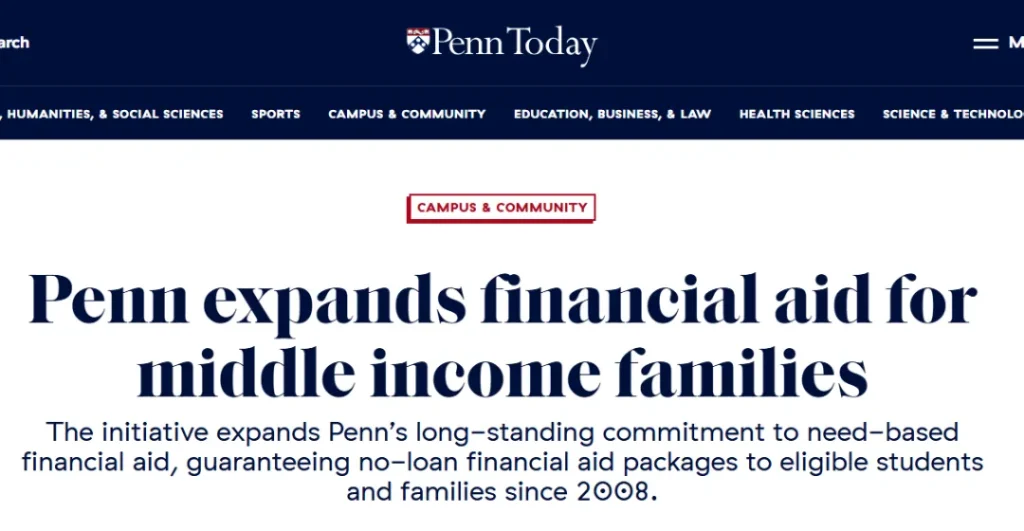
According to data published on UPenn’s official website, about 46% of undergraduate students currently receive financial aid, with an average aid amount of $70,000, covering 76% of tuition fees.
The Quaker Commitment program at UPenn is as follows:
Starting in the 2025-26 academic year, UPenn will no longer consider home equity (the current home of the student’s family) in financial aid assessments. Additionally, the school will raise the income threshold for full scholarships from $140.000 to 200.000 USD
These measures apply to all eligible undergraduate students, not just incoming freshmen.
We believe this policy has two main impacts on students:
- Increased financial support for middle-income students and reduced tuition burden: By raising the income threshold and excluding home equity, more students from middle-income families will receive higher financial aid, thereby reducing financial pressure. Families with incomes below $200,000 will have more opportunities to receive full scholarships, easing tuition burdens and improving the college experience.
- Increased admission opportunities for students from diverse economic backgrounds: This policy will enhance admission opportunities for students from various economic backgrounds, increasing campus diversity and providing more opportunities for middle-class students.
Explanation of MIT’s Financial Aid Policy
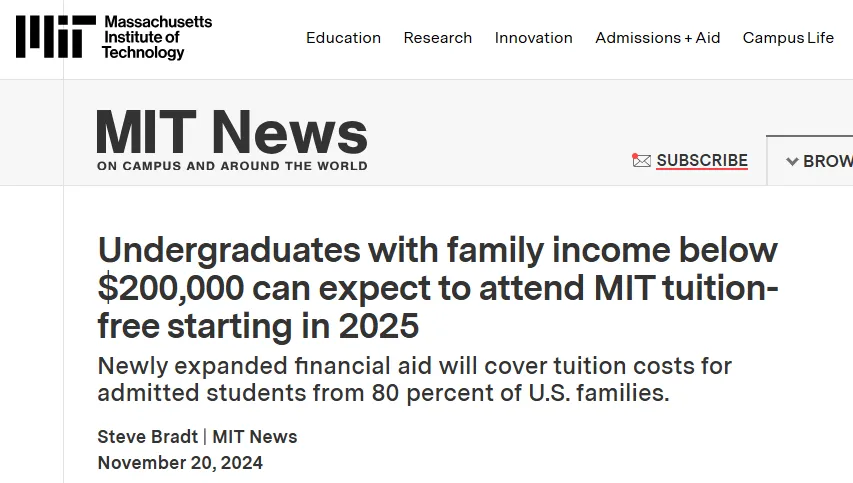
MIT announced that starting in the fall of 2025:
- Undergraduate students with family incomes below $200,000/year will receive free tuition, covering 80% of U.S. families.
- For U.S. families with annual incomes below $100,000, students will receive full financial aid covering tuition, housing, meals, fees, and personal expenses.
We believe MIT’s policy has two main impacts on students:
- Significant reduction in financial burden: Students from low-income families will receive free tuition and other educational expenses, reducing financial pressure on families and allowing more potential students to attend MIT.
- Promotion of educational equality: By increasing the financial aid threshold, MIT provides equal educational opportunities for students from diverse economic backgrounds, ensuring that the most capable students can attend MIT regardless of their family’s financial situation.
Which US Universities Offer Free Tuition?
Following the wave of tuition-free announcements by U.S. universities in the fall/winter of 2024, besides MIT and UPenn, several other top U.S. universities have also announced similar tuition-free policies. Let’s take a look at the latest tuition-free policies from these universities.
1. Johns Hopkins University School of Medicine
In July, Johns Hopkins received a 1 billion donation from Bloomberg Philanthropies, enabling the school to offer free tuition to most medical students and expand financial aid for future nurses and public health professionals. Starting in fall 2024, Johns Hopkins will provide free tuition to medical students with family incomes below $300,000, covering 95% of the U.S. population. Additionally, the school will cover living expenses for students with family incomes below $175,000, which includes most U.S. families. Nearly two-thirds of current and incoming medical students at Johns Hopkins will immediately qualify for free tuition or free tuition and living expenses.
2. Vanderbilt University
On February 8, Vanderbilt University announced the expansion of its “Opportunity Vanderbilt” scholarship program, committing to full-tuition scholarships for all students with family incomes below $150,000 annually, with no loans required.
While the school commits to full-tuition scholarships, most families with incomes below this threshold will receive financial aid exceeding tuition costs. Additionally, many students with family incomes above $150,000 will continue to receive financial aid.
3. University of Texas
On November 20, the University of Texas Board of Regents voted to allocate 35 million from endowments and other resources to support nine universities within the system. Subsequently, universities in the University of Texas system will offer free tuition and fees to undergraduate students with family incomes below $100,000.
The University of Texas System is one of the largest public university systems in the U.S., with over 256,000 students across educational and medical institutions.
Eligibility requirements: Students must be Texas residents, enrolled full-time in undergraduate programs, and apply for federal and state financial aid.
4. Carnegie Mellon University
In November, Carnegie Mellon University in Pittsburgh announced that, thanks to its new CMU Pathway Program, students with family incomes below $75,000 will receive free tuition starting in 2025.
Additionally, students with family incomes below $100,000 will have the opportunity to continue their education without federal student loans.
Eligible students: U.S. citizens or permanent residents (Green Card holders), incoming freshmen, and returning students with fixed incomes and assets.
5. Saint John’s University
On November 19, Saint John’s University announced that U.S. citizens and permanent residents (Green Card holders) only need to submit a FAFSA (Free Application for Federal Student Aid), showing a total income below $75,000 and typical assets, to be guaranteed a tuition grant equal to or exceeding the first-year tuition.
The university also stated that unless income or assets change, these grants will remain in place throughout the first year. Students may also receive additional financial aid to reduce living and housing costs.
6. Brandeis University
Brandeis University in Massachusetts announced a new financial aid plan called The Brandeis Commitment on November 19. Starting in fall 2025, new students with family incomes below
$75,000 will receive full scholarships covering tuition, while students with incomes below 200,000 will receive scholarships covering 50% of tuition.
The school emphasized that students do not need to apply for scholarships separately, as they are considered when applying for financial aid. However, this program does not apply to international students or graduate students.
7. University of Massachusetts
On October 30, the University of Massachusetts System announced that starting in fall 2025, undergraduate students with family incomes below $75,000 will receive free tuition and necessary fees at all system campuses.
The University of Massachusetts System includes:
- University of Massachusetts Amherst (UMass Amherst)
- University of Massachusetts Boston (UMass Boston)
- University of Massachusetts Dartmouth (UMass Dartmouth)
- University of Massachusetts Lowell (UMass Lowell)
- University of Massachusetts Chan Medical School (UMass Chan)
Do MIT, UPenn, and Other Major Universities’ Tuition-Free Policies Apply to International Students?
Based on currently published information, the primary beneficiaries of these policies are U.S. families.
However, in this article, we also want to discuss two related policies in college admissions: Need-blind and Need-aware policies.
- Need-blind policy: Universities do not consider applicants’ ability to pay tuition when making admission decisions. The school guarantees that students admitted under this policy will receive financial aid.
- Need-aware policy: Universities consider applicants’ ability to pay tuition when making admission decisions. The school does not guarantee full financial aid for admitted students, and those with financial difficulties may not receive aid.
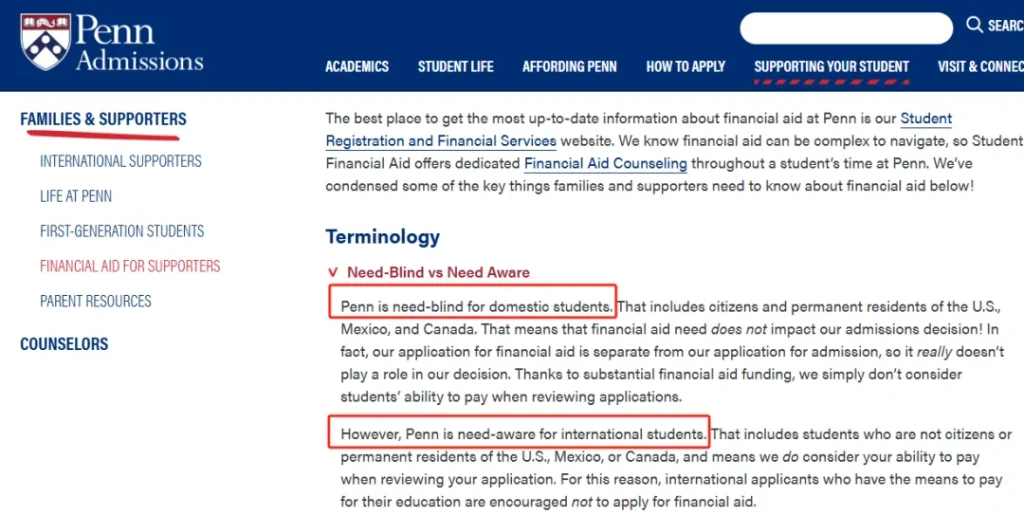
According to UPenn’s official website, the school currently applies a need-blind policy to U.S. students (including U.S. citizens and permanent residents from the U.S., Mexico, and Canada) and a need-aware policy to international students.
Therefore, UPenn’s Quaker Commitment policy will likely prioritize domestic U.S. students.
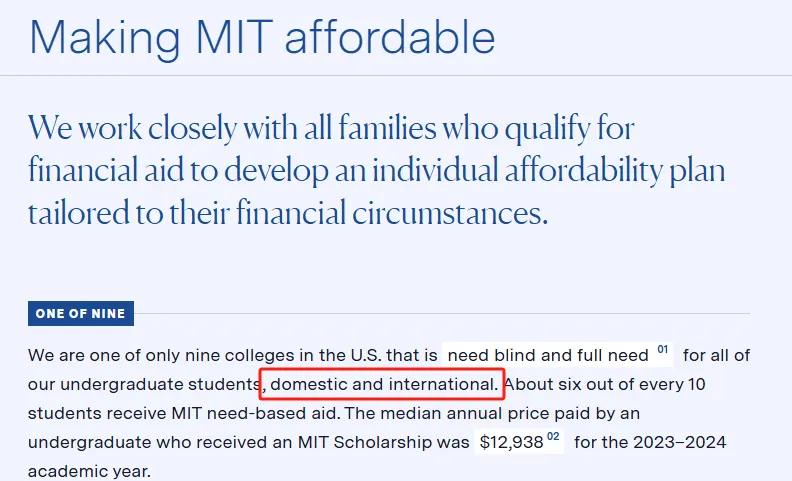
Meanwhile, according to MIT’s official website, MIT applies a need-blind policy to all students, including international students.
Thus, MIT’s proposed tuition-free plan will also apply to international students.
Improve Your AP Grades Within One Semester
Which Other U.S. Universities Offer Generous Financial Aid to International Students?
Unlike domestic students, international students are not eligible for federal or state financial aid.
If international students need financial aid for tuition, they typically rely on grants and scholarships from the school or private organizations.
US News has compiled a list of 20 U.S. universities offering the most financial aid to international students for the 2022-23 academic year. Below is a list for parents and students to reference:
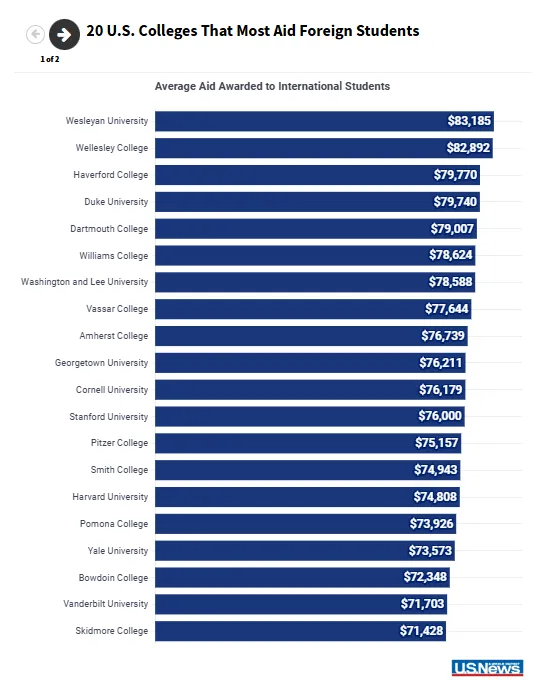
The list is ranked high to low based on “the average amount of financial aid received by international students.”
All 20 schools are private institutions, with estimated tuition and fees for the 2022-23 academic year ranging from nearly 71.500 to approximately 83.000 , which can be used for comparative reference.
These are the top five schools on the list:
- Wesleyan University: Ranked 14th among top U.S. liberal arts colleges in 2025 by US News, Wesleyan offers international students the highest average financial aid at $83,185.
- Wellesley College: Ranked 7th in US News 2025 Best Liberal Arts Colleges list, Wellesley offers an average financial aid package of $82,892 to international students.
- Haverford College: Ranked 24th in US News 2025 Best Liberal Arts Colleges list, Haverford offers an average financial aid package of $79,770 to international students.
- Duke University: Offers an average financial aid package of $79,740 to international students.
- Dartmouth College: Offers an average financial aid package of $79,007 to international students.
Georgetown University, Cornell University, and Stanford University rank 10th to 12th, with average financial aid packages for international students ranging from 76,000(Stanford) to 76,211 (Georgetown).
Harvard University ranks 15th, with an average financial aid package of $74,808 for international students.
Yale University ranks 17th, with an average financial aid package of $73,573 for international students.
Vanderbilt University ranks 19th, with an average financial aid package of $71,703 for international students.
Additionally, US News has also compiled the number of international students receiving financial aid at these schools for the 2022-23 academic year.
- Harvard University ranks first, with a total of 701 international students receiving financial aid.
- Yale University follows with 424 students.
- Dartmouth College ranks third, providing financial aid to 378 international students.
- Cornell University ranks fourth with 288 students.
- Stanford University has 250 international students receiving financial aid.
Beyond the schools listed by US News, Ivy League institutions like Princeton University and Columbia University are also known for their financial aid programs for international students.
Princeton University
Princeton University applies a need-blind policy to its financial aid program. Depending on the family’s financial situation, eligible students, including international students, can receive aid covering 50% to 100% of tuition costs.
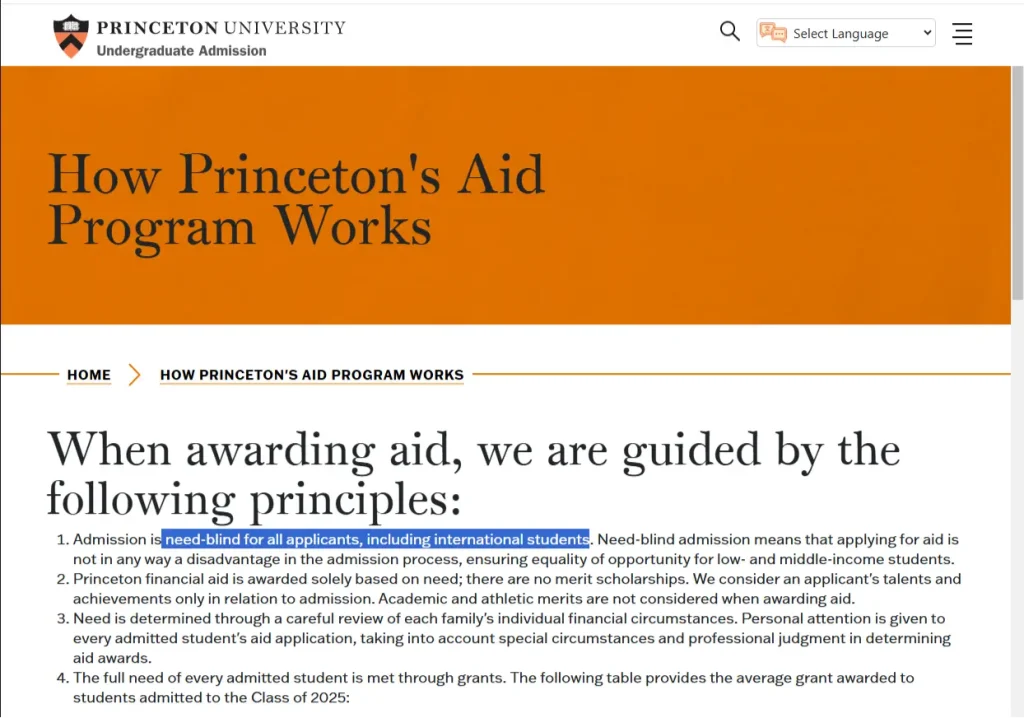
Columbia University
Unlike Princeton, Columbia University applies a need-aware policy for international students, offering financial aid based on the student’s ability to pay. According to Columbia’s official website, depending on the student’s financial situation, the school may offer varying levels of financial aid, with an average aid package of $76,265 for first-year international students.
We hope this information is helpful for parents and students.
Prestigious U.S. universities are gradually expanding comprehensive tuition support policies, particularly offering more opportunities for low- and middle-income families and students with potential. These changes will undoubtedly provide more options and hope for students.
More universities and colleges are beginning to focus on and promote educational equity, creating opportunities for more students to access higher education. While current policies may prioritize U.S. students, we hope future policies will include more support for international students.










